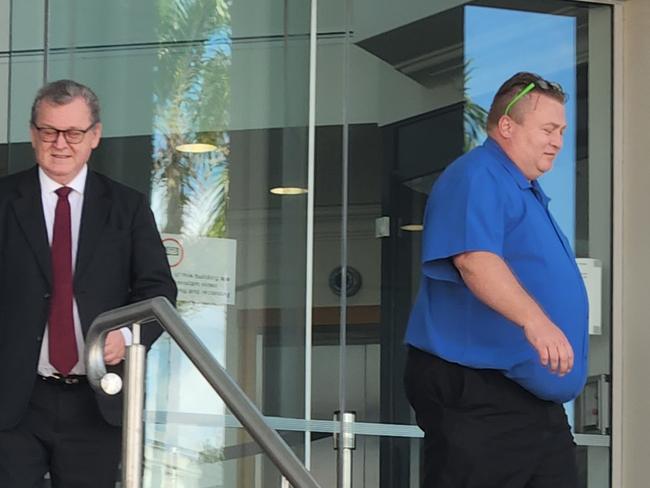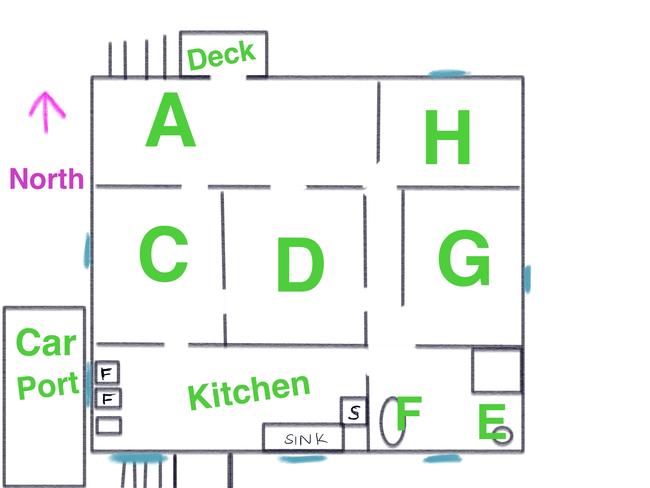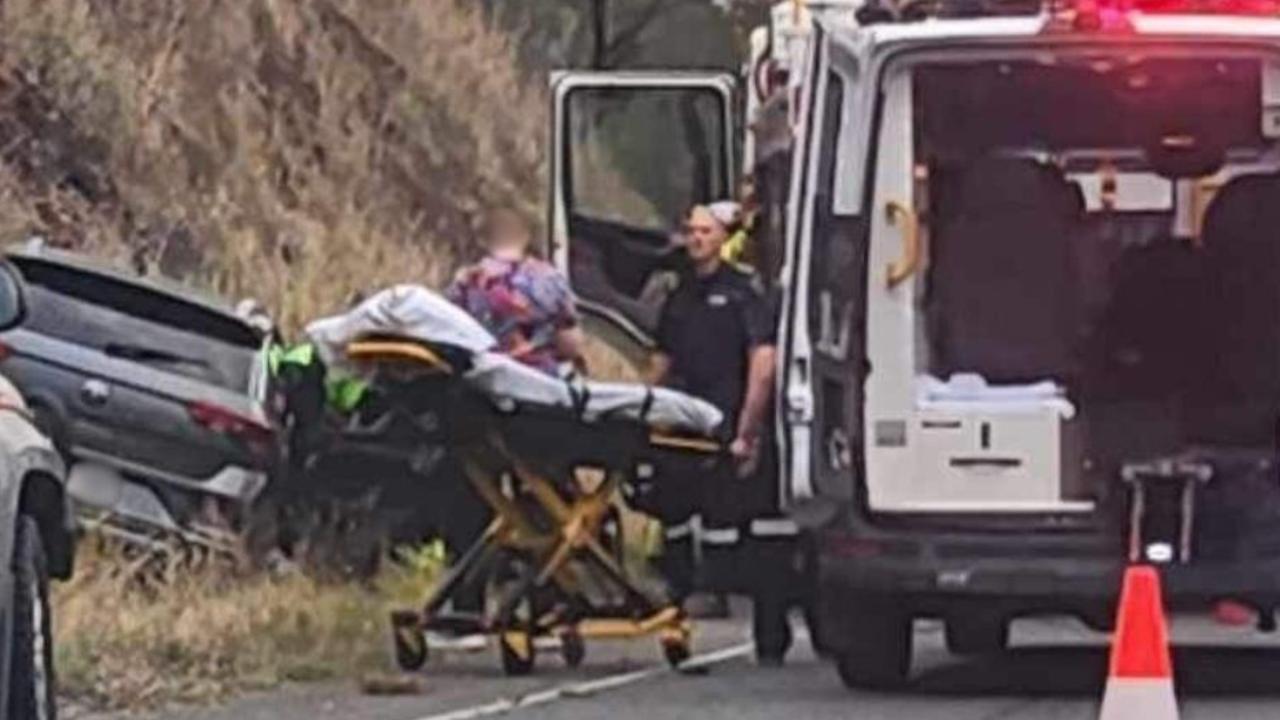Jury dismissed in trial of arson and attempted fraud accused Craig Paul Carrington
The jury in a trial where a man was accused of deliberately setting his house on fire and then attempting to get an insurance payout has given an unexpected update to the court.

Police & Courts
Don't miss out on the headlines from Police & Courts. Followed categories will be added to My News.
The jury in a trial where a man was accused of deliberately setting his house on fire and then attempting to get an insurance payout has been dismissed.
Craig Paul Carrington, 50, pleaded not guilty on September 26, 2022, in Rockhampton District Court to one count of arson and one of attempted fraud after his Bedford Street, Berserker, house was damaged due to a fire on August 8, 2020.
The trial heard from multiple witnesses before the jury retired to deliberate at 12.30pm on September 28.
About 11.30am on September 29, the jury informed the court they were unable to reach an unanimous verdict and the jury was dismisses.
Mr Carrington’s matters have been adjourned back to the trial running list with no date yet set for the case’s next mention.
EARLIER: A man accused of deliberately setting his house on fire and then attempting to get an insurance payout told an insurance investigator he moved petrol cans, along with paint and paint thinner tins into his kitchen “to stop kids passing through the property” from getting into them.
Craig Paul Carrington, 50, pleaded not guilty on September 26, 2022, in Rockhampton District Court to one count of arson and one of attempted fraud after his Bedford Street, Berserker, house was damaged due to a fire on August 8, 2020.
On Tuesday afternoon, Craig Watson from Allianz Insurance’s national investigation unit gave evidence relating to the claim Mr Carrington lodged over the house fire.
A recording of an over-the-phone interview by Mr Watson of Mr Carrington was played to the court.
Through this interview, the court heard Mr Carrington purchased the property for $174,000 in February 2019 but the Allianz insurance policy only started on December 12, 2019.
The interview recording revealed Mr Carrington had initially insured the property for $100,000 but increased his cover in April 2020.
Mr Carrington told Mr Watson he did that after Suncorp approached him to take on his insurance policy and advised him the amount of the policy should reflect how much it would cost to rebuild the home if it was damaged – about $150,000.

When asked why there was a date difference, Mr Carrington told Mr Watson he was certain it had been insured when he got the mortgage for the property – a requirement of banks considering mortgage applications.
However, he was unable to recall and inform Mr Watson what had happened afterwards.
Mr Watson informed Mr Carrington he had photographs taken at the scene which showed “lots of tins of paint lying around”.
He also pointed out there were two five-litre petrol cans in the living room, which Mr Carrington said police had moved.
Mr Carrington told Mr Watson he had gone around to the house a few weeks before the fire, cleaning up, placing tins of paint and paint thinner located under the house in a box with mats and kerosene cans and left the box on top of the fridge or freezer in the kitchen.
He said he moved the paint and paint thinner because he didn’t want “kids going through the property” to get to them.
Mr Carrington told Mr Watson he had been living in the house until March 2020, moving to the house where his employment, as a debt collector, operated from.
He said he moved because the Berserker house was cold, and it was during Covid lockdown.
“I’ve been going over there on weekends to measure up and decide what I was going to do,” Mr Carrington said during the phone interview.
Mr Carrington then told Mr Watson he had only recently had the gas to the stove connected to see if the stove worked, and had lived off takeaway while living in the home because he wouldn’t get there until after 7pm each night.
He said Ergon had recently upgraded the electricity box to an automated one as he was never home to let them inside to read the meter.
Mr Carrington said the only belongings he left in the house were the fridge and freezer, microwave and kitchen utensils.
He said the beds, paint and paint thinner at the house had been left there by the previous occupant.

Mr Carrington said bugs were getting into the house through the cracks in the linoleum and he had purchased citronella oil with plans to place it in shot glasses around the house.
Mr Watson asked Mr Carrington a series of questions that were in line with the five categories of fire causes outlined by Queensland Police fire investigator Sergeant Rebecca Bennett during the trial, such as what the weather was like, what electrical appliances were in the house and plugged into power outlets, and a discussion about possible human involvement.
Mr Watson asked if Mr Carrington had ever been threatened by anyone and if he started the fire himself.
Mr Carrington’s response to the last question was “no” and that he had been asked by another investigator if his children smoked cigarettes which he had to make enquiries about and found out “none of my kids smoke.”
Mr Watson said he had been told there had been machinery at the property.
“Yeah, everything but the house has been cleared,” Mr Carrington said.
He said six weeks before the fire, the council had contacted him about the long grass needing to be cleared and after making enquiries about getting someone into whipper snip it, which he says had to be done due to rocks and other obstacles, it was going to cost slightly more to get Hopkins Brothers in to level out the land, scraping out the vegetation and trees.
Mr Watson explained Allianz could not move forward with the claim until it had all documentation such as proof the electricity was connected, Mr Carrington’s financial records and his telecommunications provider’s report of itemised phone calls made around the time of the fire; and the final forensic report.
Mr Carrington told Mr Watson at the time of the fire he was “almost bankrupt” after paying $12,000 in legal fees regarding allegations his now former wife had made, along with $2,500 for his divorce.
He told Mr Watson he had been bankrupt twice before – in 2015 when he alleged his then-wife didn’t pay the tax bill, and in 1995 when he owned a Chandlers (electrical goods) business.
After the recording of Mr Watson’s interview with Mr Carrington, the court heard evidence from two Rockhampton Regional Council staff members who had interactions with Mr Carrington regarding the Berserker house before the fire.
One worker, a compliance officer, told the court Mr Carrington had told him in the first half of 2019, after his initial interaction in March/April, that he had plans to demolish the existing house and build a new house with a shed and swimming pool.
The officer said his interaction at that time was regarding fill going on to the property.
The officer also told the court a person needed approval from the council before demolishing/removing a house, but Mr Carrington did not obtain approval until December 2020.
This officer also said Mr Carrington had made comments such as he was “short of funds” and “didn’t have two coins to rub together”.
Another council officer recorded a phone call with Mr Carrington from August 3, 2020 – days before the house fire.
The court heard Mr Carrington was seeking an extension from the council regarding clearance of the land order made due to the long grass fire hazard which included making a 10-metre fire break on the property.
Mr Carrington told the council officer the person who was carrying out the clearing works was unable to complete it in the time the council asked.
The court heard approval for the extension was granted.
The officer told the court at that stage, Mr Carrington had a development application before the council for a retaining wall only.




